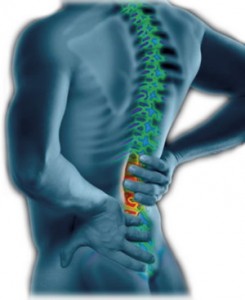Our spine is one of the most vital parts of our body that controls all movements that our body parts make. Our spine is made up of 26 bone discs that are known as vertebrae and they are responsible for the protection of the spinal cord as well as allowing movements like bending and standing.
The spinal column is built strongly and securely to bear the weight of our body as well as its various activities. However, sometimes a number of conditions or spinal disorders can drastically change the spinal structure and can also cause significant damage to the vertebrae as well as surrounding tissues. Spinal disorders and diseases not only cause back pain but they also have the potential to limit spinal movement. The treatment of these disorders differs by the condition of the patient but usually it includes physical therapy, medication or surgery.
 What causes Spinal Disorders?
What causes Spinal Disorders?
Certain medical problems are responsible for spinal disorders, these include:
- Injuries – Spinal trauma like sprains and fractures are responsible for back pain. Fractured vertebrae are often caused by osteoporosis – a condition where bones become weak and porous
- Mechanical problems – Mechanical problems in the spine occur when the spine or the back bone moves in an abnormal fashion. Inter-vertebral disc degeneration is one disorder that causes mechanical problems.
- Acquired conditions and diseases
- Infections and tumors
Types of Spinal Disorders
Different types of spinal disorders include:
- Chronic back pain – Back pain that lasts for more than six to three months
- Degenerative disc disease – This is not a disease but a normal part of the aging process of the spine. With age the spinal discs starts to degenerate and break down which in turn effects their ability to function efficiently as a part of the spinal joint
- Spinal stenosis – Develops with age (usually past 50) and occurs when the nerve roots or the spinal cord in the cervical region (neck) or the lumbar region (lower back) are compressed or impinged
- Scoliosis – A condition where the spine is abnormally curved side-to side
- Kyphosis – Also known as the Kelso’s hunchback or roundback, this condition is the overcurvature of the upper back or the thoracic vertebrae
Understand your spinal problems better and get the best spinal pain recovery treatment options. Let us help you make the right decision for your spine by filling the form given above or by giving us a call at (888) 779-8716 today.
